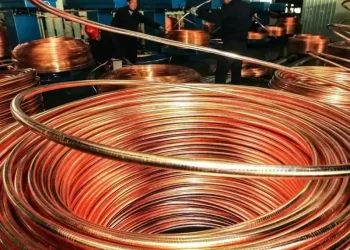BEIJING: China’s August aluminium output rose from a year earlier to its highest since 2002, as higher prices and the prospect of steady profits kept smelters going strong.
The world’s biggest aluminium producer churned out 3.73million metric tons of primary aluminium, 2.5% higher year-on-year, data from the National Bureau of Statistics (NBS) showed on Saturday.
The amount was the highest monthly output on NBS data since 2002.
Daily output in August averaged 120,322 tons, less than the average of 122,333 tons in June, based on Reuters’ calculation.
The strong output this year was due to increased operation by smelters in the main producing regions triggered by a rally in aluminium prices which reached an almost two-year high in late May.
Prices began falling, however, due to concerns over demand amid indicators showing manufacturing weaknesses in China and the United States, as well as growing domestic supplies.
Aluminium hits 2-week low on weak Chinese data, momentum signals reverse
State-backed research house Antaike estimated the average industry profits would fall last month as prices drop to 2,121 yuan ($299.03) per metric ton, a level which smelters said could still as sustain strong production in the near term.
Meanwhile, producers in the southwestern Yunnan province have been pumping out the metal due to ample hydropower supply.
For the first eight months of the year, China produced 28.91 million tons of aluminium, up 5.1% from a year earlier, the data showed.
Production of 10 nonferrous metals, including copper, aluminium, lead, zinc and nickel, rose 4% to 6.62 million tons in August from a year earlier. Year-to-date output was up 5.4% at 52.05 million tons. The other non-ferrous metals are tin, antimony, mercury, magnesium and titanium.









